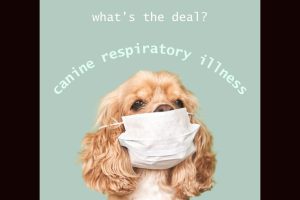Tuolumne County, CA – The warnings have gone out around the country for pet owners to watch their dogs for any signs of a mysterious respiratory illness.
“At this time, our shelter has not seen any cases,” advised Tuolumne County Animal Control (TCAC) officials.
Regarding the virus’s prevalence, shelter officials at the Cambria Veterinary Clinic in the Los Angeles area detailed that they “believed the disease is now in San Luis Obispo County but can’t confirm it since the virus/bacteria hasn’t been identified.” They added, “This is based on reports from local vet clinics, kennels, and our own observations.”
The clinic provides information on what dog owners should look for and what they need to do:
Symptoms:
- Cough, usually dry/hacking, often worse if walking on leash (some lasting up to 8 weeks)
- Nasal discharge/sneezing
- Runny eyes
- Less common but may indicate more serious disease: lethargy, poor appetite, diarrhea, labored breathing
- Very rare cases have progressed to severe pneumonia, resulting in extended hospitalizations and, rarely, death
Precautions for pet owners:
- Avoid boarding if possible during this time. An in-home pet sitter can minimize exposure
- Avoid high-density dog areas if you are concerned, especially if your pet is older or immunocompromised, i.e., dog parks, crowded dog beaches, and larger grooming facilities.
- Avoid communal dog water bowls and toys at restaurants, dog parks, etc.
- Make sure your dog is up-to-date on vaccines, in particular parainfluenza (part of DHPP), kennel cough, and influenza.
- If your dog becomes sick with any of the above symptoms, especially recently at a boarding facility, consider making an appointment.
- Seek immediate veterinary attention if your pet has cough/nasal discharge/sneezing AND ALSO poor energy, appetite, or labored breathing.
Many shelters and clinics are also taking precautions by adjusting their infectious disease protocols to evaluate, treat and disinfect after potentially affected patients. That is why owners bringing in a dog are asked to call when they arrive and wait for a technician to come to them for further instructions.

